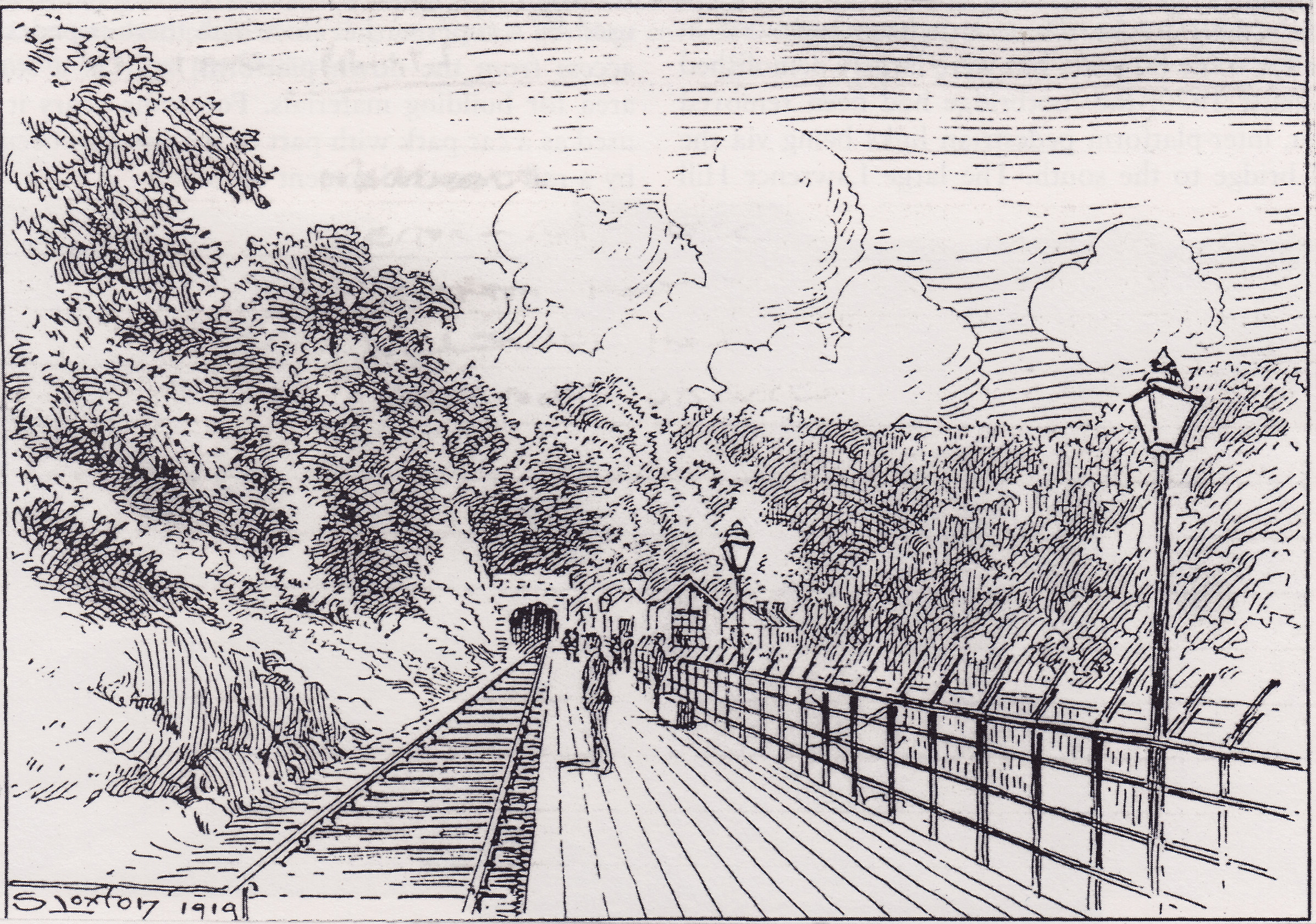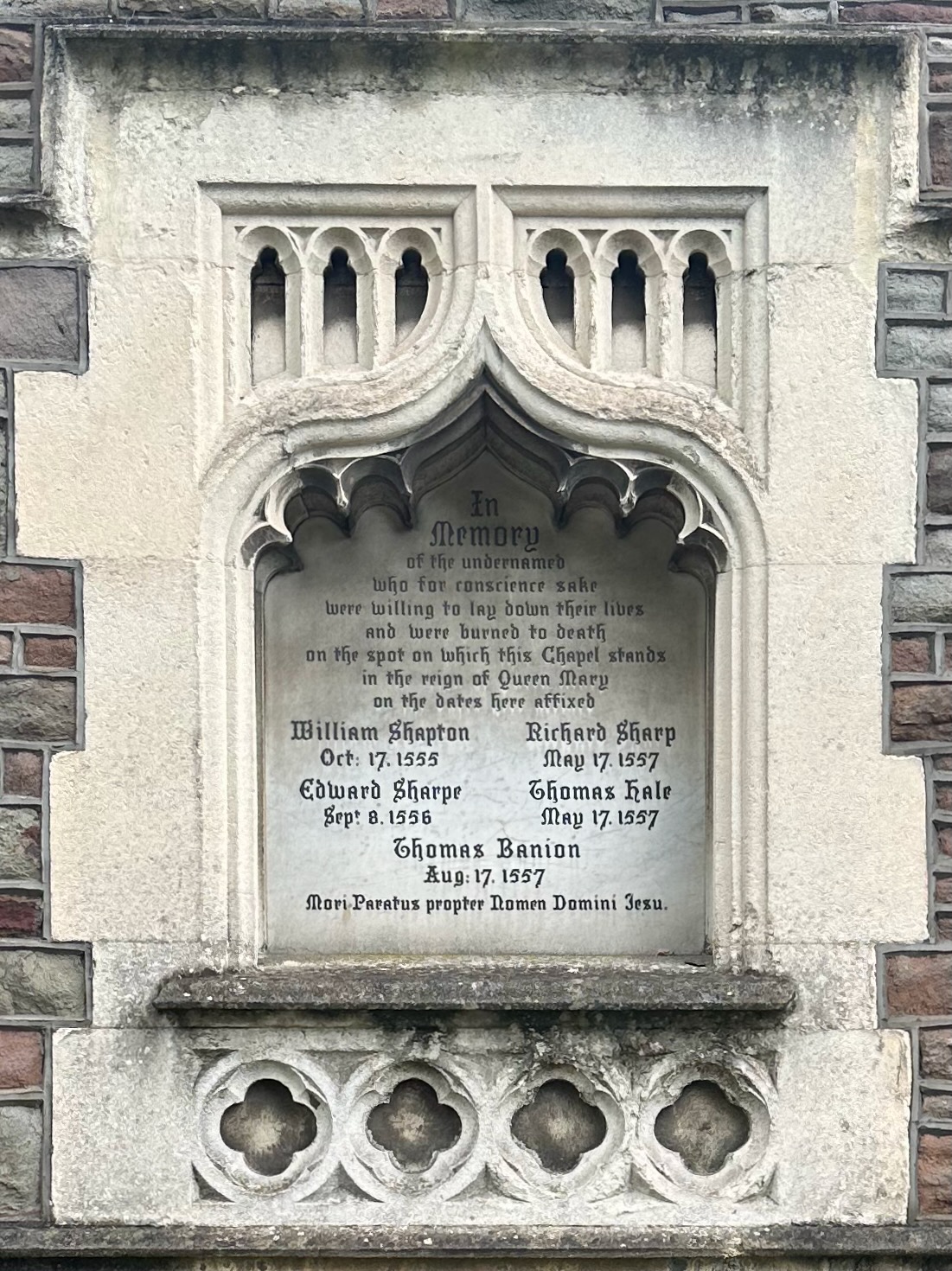|
Bewys Cross
Bewys Cross (or Bewy's Cross) is a monument consisting of the steps, plinth and truncated shaft said to be of an ancient cross of uncertain age which used to stand on the ancient seabank or seawall of the River Severn in that area of Shirehampton in Gloucestershire, United Kingdom, now known as Avonmouth. The cross is perhaps early fifteenth century; the steps may be more recent. The site is marked as "Bevis's Cross" on a map of 1769 and as "Bevis Stone" on one of 1772, close to where the River Avon used to flow into the Severn, about halfway between the sites of the later Avonmouth and Marine Hotels (which have both since been demolished). Its position is now in the middle of the Royal Edward Dock, Avonmouth. Since the 1870s, the Avon has flowed into the Severn about half a mile further south. Purpose The purpose of the cross seems most likely to have been to mark the old mouth of the Avon, the access to the port of Bristol, for the benefit of sailors approaching from the sout ... [...More Info...] [...Related Items...] OR: [Wikipedia] [Google] [Baidu] |
Sir Bevis Of Hampton
Bevis of Hampton ( fro, Beuve(s) or or ; Anglo-Norman: ; it, Buovo d'Antona) or Sir Bevois, was a legendary English hero and the subject of Anglo-Norman, Dutch, French, English, Venetian,Hasenohr, 173–4. and other medieval metrical chivalric romances that bear his name. The tale also exists in medieval prose, with translations to Romanian, Russian, Dutch, Irish, Welsh, Old Norse and Yiddish. Legend ''Sir Bevis of Hampton'' (c. 1324) is a Middle English romance. It contains many themes common to that genre: a hero whose exploits take him from callow youth to hard-won maturity, ending with a serene and almost sanctified death. Supporting him are a resourceful, appealing heroine and faithful servants set against dynastic intrigue, and a parade of interesting villains, both foreign and domestic. The plot has a geographical sweep which moves back and forth from England to the Near East and through most of western Europe, replete with battles against dragons, giants and other my ... [...More Info...] [...Related Items...] OR: [Wikipedia] [Google] [Baidu] |
Monuments And Memorials In Bristol
A monument is a type of structure that was explicitly created to commemorate a person or event, or which has become relevant to a social group as a part of their remembrance of historic times or cultural heritage, due to its artistic, historical, political, technical or architectural importance. Some of the first monuments were dolmens or menhirs, megalithic constructions built for religious or funerary purposes. Examples of monuments include statues, (war) memorials, historical buildings, archaeological sites, and cultural assets. If there is a public interest in its preservation, a monument can for example be listed as a UNESCO World Heritage Site. Etymology It is believed that the origin of the word "monument" comes from the Greek ''mnemosynon'' and the Latin ''moneo'', ''monere'', which means 'to remind', 'to advise' or 'to warn', however, it is also believed that the word monument originates from an Albanian word 'mani men' which in Albanian language means 'remember ... [...More Info...] [...Related Items...] OR: [Wikipedia] [Google] [Baidu] |
Early English Text Society
The Early English Text Society (EETS) is a text publication society founded in 1864 which is dedicated to the editing and publication of early English texts, especially those only available in manuscript. Most of its volumes contain editions of Middle English or Old English texts. It is known for being the first to print many important English manuscripts, including Cotton Nero A.x, which contains ''Pearl'', ''Sir Gawain and the Green Knight'', and other poems. History The Society was founded in England in 1864 by Frederick James Furnivall. Its stated goal was "on the one hand, to print all that is most valuable of the yet unprinted in English, and, on the other, to re-edit and reprint all that is most valuable in printed English books, which from their scarcity or price are not within the reach of the student of moderate means." As of 2020, the Society had published 354 volumes in its Original Series; 126 volumes in its Extra Series, published between 1867 and 1935, comprisi ... [...More Info...] [...Related Items...] OR: [Wikipedia] [Google] [Baidu] |
Eugen Kölbing
Eugen Kölbing (1846-1899) was a German philologist, a specialist in the study of Nordic, English, and French language and literature and comparative linguistics and literature. Academic career Eugen Kölbing studied Philosophy, Classical Philology, Comparative Literature, German(ic) Philology, and "New" Philology at the University of Leipzig, wrote his doctoral dissertation (1868) on the Nordic versions of the legend of Parzival under the supervision of Friedrich Karl Theodor Zarncke, an eminent Germanist, and finished his post-doctoral dissertation at the University of Breslau on the Nordic versions of the '' Partonopeus'' legend (1873). He became professor at the University of Breslau. His published works covered a wide range of medieval works. He founded in 1877 the journal ''Englische Studien'' and served as its sole editor until 1899, thus making a lasting contribution to the foundational phase of English studies in Europe.Richard Utz, "Medieval Scholarship in Englische Stud ... [...More Info...] [...Related Items...] OR: [Wikipedia] [Google] [Baidu] |
Bristol City Council
Bristol City Council is the local authority of Bristol, England. The council is a unitary authority, and is unusual in the United Kingdom in that its executive function is controlled by a directly elected mayor of Bristol. Bristol has 34 wards, electing a total of 70 councillors. History The council was formed by the Local Government Act 1972. It was first elected in 1973, a year before formally coming into its powers and prior to the creation of the non-metropolitan district of Bristol on 1 April 1974. Under the Local Government Act 1972 Bristol as a non-metropolitan district council would share power with the Avon County Council. This arrangement lasted until 1996 when Avon County Council was abolished and Bristol City Council gained responsibility for services that had been provided by the county council. Political composition Mayor The mayor of Bristol following the 2021 mayoral election is Marvin Rees for the Labour Party. Originally intended to serve for four yea ... [...More Info...] [...Related Items...] OR: [Wikipedia] [Google] [Baidu] |
Bristol Port Railway And Pier
The Bristol Port Railway and Pier (occasionally referred to as the Bristol Port and Pier Railway) was a railway in Bristol, England. Route The Bristol Port Railway and Pier company (BPRP) ran from a main terminus at (originally called Clifton), northwards to west of Bristol city centre between the Clifton Suspension Bridge and Bridge Valley Road, to a terminus at Avonmouth. Upon leaving Hotwells, the line ran north alongside the River Avon through two tunnels, to a halt and passing point, then to Sneyd Park Junction, where the Clifton Extension Railway joined it. Continuing north following the river is the station at , then a bridge over the River Trym. The line curved west around Horse-Shoe Bend, then went slightly inland to , then turned back north-west. At Avonmouth Dock Junction the Extension Railway diverged north, and another line diverged west for freight, while the BPRP line continued into the station at . Beyond there, the line diverged again, with one line going west ... [...More Info...] [...Related Items...] OR: [Wikipedia] [Google] [Baidu] |
King's Weston House
Kings Weston House () is a historic building in Kings Weston Lane, Kingsweston, Bristol, England. History It was built between 1712 and 1719 was designed by Sir John Vanbrugh for Edward Southwell on the site of an earlier Tudor house, remodelled 1763–1768 by Robert Mylne and again between 1845 and 1850 by Thomas Hopper. A significant architectural feature is the grouping of all the chimneys into a massive arcade. The Kings Weston estate possesses one of the largest collections of buildings designed by Sir John Vanbrugh in the UK. Whilst the house and the majority of the estate buildings are still standing others have been demolished or been heavily altered. Bristol is the only UK city outside London to possess buildings designed by Vanbrugh.Foyle, p. 292 The house passed through several generations of the Southwell family until the estate was sold in 1833 to Mr Philip John Miles for £210,000, and became the family seat. During the World War I the House was converted int ... [...More Info...] [...Related Items...] OR: [Wikipedia] [Google] [Baidu] |
Bewell's Cross
Bewell's Cross is a lost monument which marked the boundary of the county of Bristol when this was created in 1373. The name goes back at least as far as 1188, however, when it is referred to in a charter of King John 'quandam crucem vocatam Bewellescross' (a certain cross called Bewell's Cross). The 1373 survey mentions the Cross twice, noting that those perambulating the boundary should go up the highway to Henbury 'as far as a certain cross called Bewellescrosse, and from thence further northwards as far as a stone fixed hard by the spring of Bewelle.'. It then goes on to say that the boundary returned back south along 'the same king’s highway as far as another stone fixed hard by the aforesaid cross on the eastern part of the same cross'. The cross stood in or close to the Gallows Field at the top of St Michael's Hill, the former principal road from Bristol to Wales via the Severn ferry at Aust. This is where the Bristol's 'Marian Martyrs' were burnt in 1556-7, events descr ... [...More Info...] [...Related Items...] OR: [Wikipedia] [Google] [Baidu] |
Almondsbury
Almondsbury () is a large village near junction 16 of the M5 motorway, in South Gloucestershire, England, and a civil parish which also includes the villages of Hortham, Gaunt's Earthcott, Over, Easter Compton, Compton Greenfield, Hallen and Berwick. Governance Almondsbury is in the South Gloucestershire unitary authority area. The electoral ward of Almondsbury covers the same area as the civil parish, stretching from Gaunt's Earthcott east of the M5 motorway south west to Hallen on the boundary with Bristol. Description The village is split by a steep hill, part of the escarpment overlooking the Severn floodplain. At the bottom of the hill is Lower Almondsbury where a pub and hotel, The Bowl Inn, is situated. South Wales, the Forest of Dean, the River Severn and both Severn Bridges are visible from the higher parts of the village. The other part of the village consists mainly of ribbon development along the A38, which has more of an urban characteristic. The place-name 'A ... [...More Info...] [...Related Items...] OR: [Wikipedia] [Google] [Baidu] |
Bristol Archives
Bristol Archives (formerly Bristol Record Office) was established in 1924. It was the first borough record office in the United Kingdom, since at that time there was only one other local authority record office (Bedfordshire) in existence. It looks after the official archives of the City of Bristol, besides collecting and preserving many other records relating to the city and surrounding area for current and future generations to consult. It moved from the City Hall to newly converted premises in the former B Bond Warehouse in 1992. The office is formally recognised by the Lord Chancellor for holding public records, and it acts as a diocesan record office for the Diocese of Bristol. Major deposited collections include those of J. S. Fry & Sons, chocolate manufacturers, 1693–1966, and Imperial Brands (formerly W.D. & H.O. Wills, tobacco manufacturers), late 18th century – 20th century. However, for many years one of its best-known holdings was a single volume of judicial ... [...More Info...] [...Related Items...] OR: [Wikipedia] [Google] [Baidu] |
Cambridgeshire
Cambridgeshire (abbreviated Cambs.) is a Counties of England, county in the East of England, bordering Lincolnshire to the north, Norfolk to the north-east, Suffolk to the east, Essex and Hertfordshire to the south, and Bedfordshire and Northamptonshire to the west. The city of Cambridge is the county town. Following the Local Government Act 1972 restructuring, modern Cambridgeshire was formed in 1974 through the amalgamation of two administrative counties: Cambridgeshire and Isle of Ely, comprising the Historic counties of England, historic county of Cambridgeshire (including the Isle of Ely); and Huntingdon and Peterborough, comprising the historic county of Huntingdonshire and the Soke of Peterborough, historically part of Northamptonshire. Cambridgeshire contains most of the region known as Silicon Fen. The county is now divided between Cambridgeshire County Council and Peterborough City Council, which since 1998 has formed a separate Unitary authorities of England, unita ... [...More Info...] [...Related Items...] OR: [Wikipedia] [Google] [Baidu] |

.jpg)






